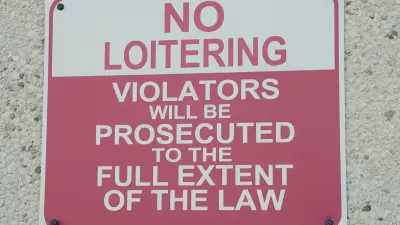The city’s progress in building supportive housing units has not kept up with the rising numbers of residents experiencing homelessness.

An article in Mirror Indy describes how the city and local organizations in Indianapolis are working to build supportive housing facilities that offer wraparound services to unhoused residents that can help them transition into more stable housing. “Despite success with supportive housing projects that bring people out of homelessness and provide a safe place to work through issues, Indianapolis fell short of an ambitious goal set by stakeholders six years ago.”
The goal was to end homelessness longer than 30 days by 2023. But in January 2024, the number of people experiencing homelessness counted in the city stood at 1,701. Meanwhile, it can take up to 90 days for housing voucher recipients to access housing. The city is maintaining its efforts to build supportive housing while also working with landlords to make more existing housing units available to people using vouchers.
The city is attempting to take a ‘Housing First’ approach, a strategy that prioritizes getting people into housing as soon as possible while providing access to supportive services. “There’s local evidence that shows permanent supportive housing works. Leaders at DMD, CHIP, and Horizon House all said retention rates are higher than the national average — above 90 percent.”
Officials say complicated funding streams and a “tough environment to do development” slowed the city’s progress. The local housing authority is also in the process of being reorganized “after years of mismanagement and dysfunction.”
FULL STORY: Ending homelessness: Indianapolis’s struggle to build more supportive housing

Trump Administration Could Effectively End Housing Voucher Program
Federal officials are eyeing major cuts to the Section 8 program that helps millions of low-income households pay rent.

Planetizen Federal Action Tracker
A weekly monitor of how Trump’s orders and actions are impacting planners and planning in America.

The 120 Year Old Tiny Home Villages That Sheltered San Francisco’s Earthquake Refugees
More than a century ago, San Francisco mobilized to house thousands of residents displaced by the 1906 earthquake. Could their strategy offer a model for the present?

HSR Reaches Key Settlement in Northern California City
The state’s high-speed rail authority reached an agreement with Millbrae, a key city on the train’s proposed route to San Francisco.

Washington State Legislature Passes Parking Reform Bill
A bill that would limit parking requirements for new developments is headed to the governor’s desk.

Missouri Law Would Ban Protections for Housing Voucher Users
A state law seeks to overturn source-of-income discrimination bans passed by several Missouri cities.
Urban Design for Planners 1: Software Tools
This six-course series explores essential urban design concepts using open source software and equips planners with the tools they need to participate fully in the urban design process.
Planning for Universal Design
Learn the tools for implementing Universal Design in planning regulations.
Ada County Highway District
Clanton & Associates, Inc.
Jessamine County Fiscal Court
Institute for Housing and Urban Development Studies (IHS)
City of Grandview
Harvard GSD Executive Education
Toledo-Lucas County Plan Commissions
Salt Lake City
NYU Wagner Graduate School of Public Service





























